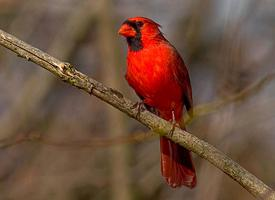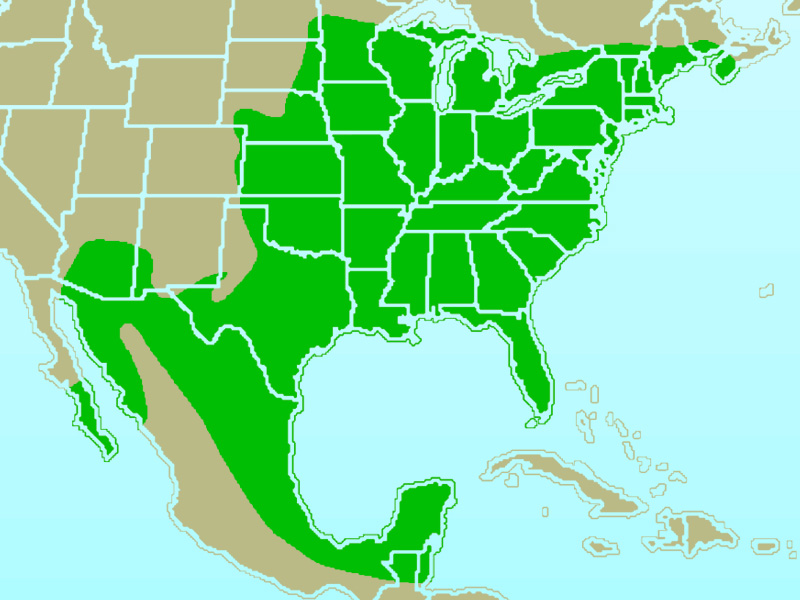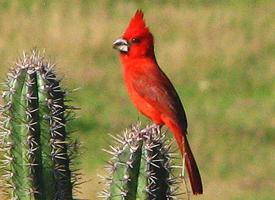
Poids et mesures
| Longueur | de 21 à 23 cm |
|---|
Description de l'animal
The Northern cardinal, scientifically known as Cardinalis cardinalis, is a captivating bird species renowned for its striking appearance and melodious song. Native to North and Central America, these birds are a common sight across the eastern United States, extending into Canada and southward to Mexico and Belize. They have also adapted well to human-altered landscapes, making them a beloved visitor to backyard feeders.One of the most distinguishing features of the Northern cardinal is its vibrant plumage. Male cardinals are particularly notable for their brilliant red feathers that cover their bodies, except for the area around their beaks which is colored in a contrasting black. This vivid coloration is not just for display; it plays a crucial role in attracting mates and establishing territory. Female cardinals, on the other hand, boast a more subdued palette of warm browns and reds, with hints of red on their wings, tails, and crests, which allows them to blend into their surroundings while nesting.
Both sexes are recognized by their prominent crests and strong, conical beaks designed for cracking seeds, which constitute a significant part of their diet. Cardinals are granivorous, with a preference for seeds, grains, and fruits, though they will also consume insects and feed them to their young.
Northern cardinals are non-migratory birds, meaning they spend their whole lives within a relatively small area. They are fiercely territorial during breeding season, with males exhibiting aggressive behavior to defend their territory. This behavior is complemented by their rich and varied vocalizations. Cardinals are known for their clear, whistle-like songs, which males use to proclaim their territory and attract females. Interestingly, both male and female cardinals sing, which is relatively unusual among songbirds in North America.
Breeding pairs of Northern cardinals are monogamous, often staying together throughout the year. They build nests in dense thickets or shrubs, where the female lays and incubates a clutch of three to four eggs. Both parents are involved in feeding and caring for the chicks until they are ready to leave the nest.
Over the years, the Northern cardinal has not only enchanted bird watchers and nature enthusiasts but has also gained cultural significance. It is the state bird of seven U.S. states — more than any other bird — and its image is a popular motif in art, literature, and even sports team mascots. Despite the pressures of habitat loss and other environmental challenges, the Northern cardinal has maintained a stable population, partly due to its adaptability to human-dominated landscapes. This resilience, coupled with their beauty and song, ensures that the Northern cardinal remains a cherished part of the natural world and human culture alike.
Carte de répartition

Animaux similaires
Nouvelles photos d'animaux
Top 10 des animaux
- Dolphin gull (Leucophaeus scoresbii)
- Japanese macaque (Macaca fuscata)
- Greek tortoise (Testudo graeca)
- Stone loach (Barbatula barbatula)
- Russian tortoise (Testudo horsfieldii)
- Galápagos tortoise (Geochelone nigra complex)
- Diana monkey (Cercopithecus diana)
- Moustached guenon (Cercopithecus cephus)
- Common flying dragon (Draco volans)
- Galápagos penguin (Spheniscus mendiculus)

